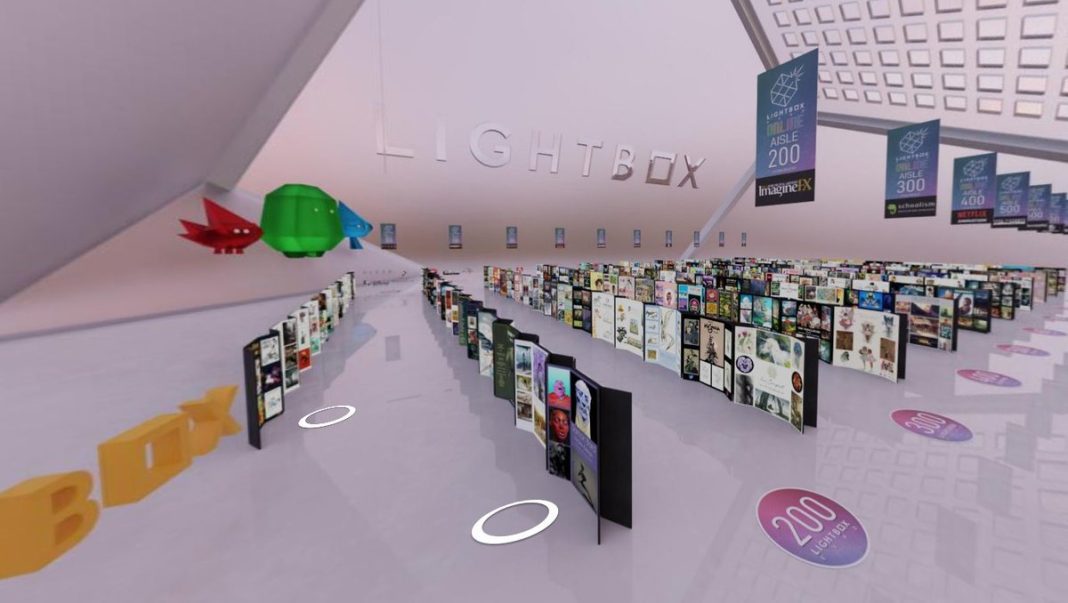In the age of digital connectivity, the world of art and entertainment has been rapidly evolving. From virtual galleries to online conventions, the boundaries of what is possible have expanded significantly. One event that has been at the forefront of this transformation is the LightBox Expo, which has been redefining the virtual show experience.
A Brief Introduction to LightBox Expo
The LightBox Expo is an annual gathering that celebrates the art of animation, illustration, and concept art. Traditionally, it has been an in-person event, bringing together artists, industry professionals, and enthusiasts from around the world. However, in recent years, LightBox Expo has taken a bold step into the virtual realm, not just as a response to the global pandemic but also as a means to embrace the possibilities of digital platforms.
Embracing the Virtual Frontier
In 2020, when the COVID-19 pandemic disrupted events worldwide, LightBox Expo faced the challenge of either canceling the event or finding a new way to connect with its audience. The team behind LightBox Expo chose the latter, deciding to harness the power of technology to create a virtual experience like no other.
The Birth of a Digital Wonderland
LightBox Expo 2020 marked the beginning of this transformation. The event’s organizers collaborated with artists, software developers, and virtual event experts to recreate the magic of LightBox Expo in a digital space. The result was nothing short of astounding.
1. Immersive Virtual Environment
The virtual LightBox Expo offered attendees an immersive environment where they could explore a digital rendition of a convention center. Attendees created customizable avatars and roamed through a 3D world filled with art booths, panel discussions, and networking opportunities. It was as close to the real thing as possible, minus the physical presence.
2. Art Gallery Showcase
One of the standout features of LightBox Expo’s digital transformation was the virtual art gallery. Artists from around the world showcased their work in a visually stunning and interactive space. Attendees could view art, engage with the artists, and even make purchases directly through the platform. This breakthrough allowed artists to reach a global audience like never before.
3. Virtual Panels and Workshops
Panel discussions and workshops have always been a significant part of LightBox Expo. The transition to a virtual format didn’t diminish their importance. In fact, it opened up new possibilities. Attendees could join live discussions with industry legends, ask questions, and participate in hands-on workshops from the comfort of their homes.
4. Networking Opportunities
One might assume that virtual events lack the personal touch that physical gatherings offer. However, LightBox Expo proved this wrong. Attendees had the opportunity to network with fellow artists and industry professionals through virtual meetups, chat rooms, and even one-on-one sessions. The event’s organizers understood the importance of human connection in the digital age.
Expanding Horizons
LightBox Expo’s successful venture into the virtual realm not only ensured the event’s survival during challenging times but also expanded its reach and impact. Here are some key takeaways from this transition:
1. Global Accessibility
Going virtual removed geographical barriers. Artists and enthusiasts from all corners of the world could now participate, learn, and connect without the need for travel expenses or visa restrictions.
2. Cost-Effective Participation
The reduced cost of attending a virtual event compared to an in-person convention made it more accessible to a broader audience, including emerging artists and students.
3. Sustainable Approach
LightBox Expo’s virtual format contributed to a reduction in the carbon footprint associated with hosting large in-person events. It aligns with the global trend toward more sustainable practices.
4. Innovation and Adaptability
The willingness to embrace technology and adapt to changing circumstances is a testament to LightBox Expo’s dedication to the art community. It sets an example for other conventions and events seeking to thrive in the digital age.
The Future of LightBox Expo
As the world slowly recovers from the pandemic, LightBox Expo’s organizers have recognized the value of their virtual offering. In addition to the traditional in-person event, they have decided to continue hosting a virtual version of the expo, ensuring that their global community remains connected.
The hybrid approach, combining the best of both worlds, promises an exciting future for LightBox Expo. Attendees can choose between attending in person or experiencing the event from the comfort of their homes, offering flexibility and convenience.
Conclusion
The story of LightBox Expo’s journey into the virtual realm is a shining example of adaptability, innovation, and the enduring spirit of the art community. By successfully reinventing the virtual show experience, LightBox Expo has not only weathered the storm but has emerged stronger and more accessible than ever before.
In a rapidly evolving digital landscape, LightBox Expo’s ability to create an immersive, interactive, and inclusive virtual event demonstrates that the future of art and entertainment is not bound by physical limitations. It’s a future where creativity knows no borders, and connections are made across the globe with just a click.
































